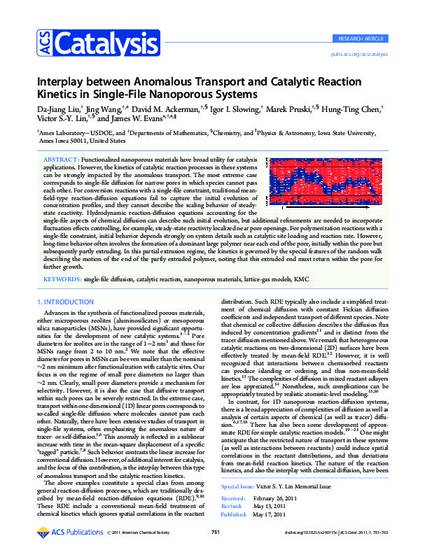
- Chemistry,
- Mathematics and
- Physics
Functionalized nanoporous materials have broad utility for catalysis applications. However, the kinetics of catalytic reaction processes in these systems can be strongly impacted by the anomalous transport. The most extreme case corresponds to single-file diffusion for narrow pores in which species cannot pass each other. For conversion reactions with a single-file constraint, traditional mean-field-type reaction-diffusion equations fail to capture the initial evolution of concentration profiles, and they cannot describe the scaling behavior of steady-state reactivity. Hydrodynamic reaction-diffusion equations accounting for the single-file aspects of chemical diffusion can describe such initial evolution, but additional refinements are needed to incorporate fluctuation effects controlling, for example, steady-state reactivity localized near pore openings. For polymerization reactions with a single-file constraint, initial behavior depends strongly on system details such as catalytic site loading and reaction rate. However, long-time behavior often involves the formation of a dominant large polymer near each end of the pore, initially within the pore but subsequently partly extruding. In this partial extrusion regime, the kinetics is governed by the special features of the random walk describing the motion of the end of the partly extruded polymer, noting that this extruded end must return within the pore for further growth.
Available at: http://works.bepress.com/jigang-wang/2/

Reprinted (adapted) with permission from ACS Catalysis 1 (2011): 751, doi:10.1021/cs200115c. Copyright 2011 American Chemical Society.